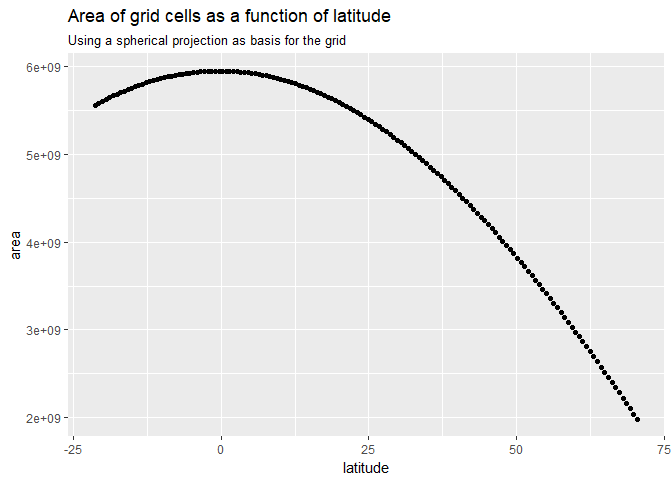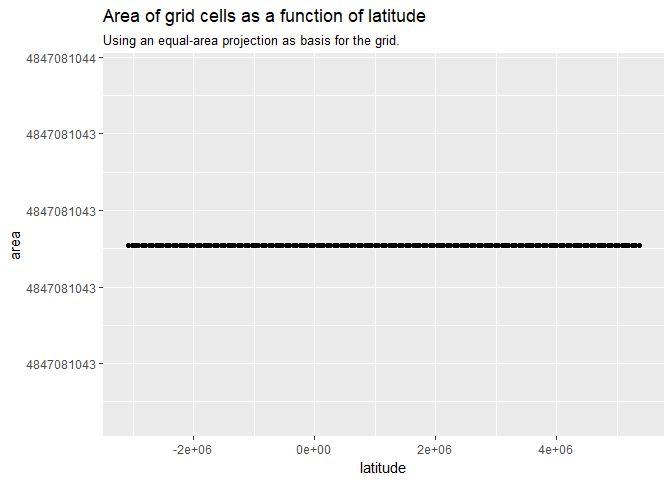Creating equal-area grids
A while ago I published a bubble-grid map of the European continent showing absolute population change over a regular grid. But I made a rookie mistake: I’ve accidentally created a grid where the grid cells have different areas, thereby compromising the bubble grid map which is supposed to show counts over equal areas. This mistake happened because I created the grid over geographic data in spherical coordinates (latitude-longitude data). What I should have done (and correctly did in a subsequent blog post) is to project the geodata to equal-area coordinates before applying a grid. Here’s a demonstration of the wrong and the correct approach…
library(eurostat) # eurostat data
library(tidyverse) # tidy data transformation
library(sf) # simple features GIS
# download geospatial data for NUTS-3 regions
eu_nuts3_sf <-
get_eurostat_geospatial(output_class = 'sf',
resolution = '60', nuts_level = 3)
# divide the European continent into a 150 by 150 cell grid
# using a spherical CRS
euro_grid_the_wrong_way <-
st_make_grid(eu_nuts3_sf %>% filter(LEVL_CODE == 3) %>% st_transform(4258), n = 150)
# Here's a demonstration how the area of the grid-cells depend
# on their latitude:
euro_grid_the_wrong_way %>%
st_coordinates() %>%
as_tibble() %>%
slice(seq(1, n(), 5)) %>%
mutate(area = as.numeric(st_area(euro_grid_the_wrong_way))) %>%
ggplot(aes(y = area, x = Y)) +
geom_point() +
labs(x = 'latitude',
title = 'Area of grid cells as a function of latitude',
subtitle = 'Using a spherical projection as basis for the grid')

This is what you get when applying a regular grid to a sphere: The areas will depend on latitude.
Here’s how to create an equal-area grid.
# divide the European continent into a 150 by 150 cell grid
# use an equal area projection
euro_grid_equal_area <-
eu_nuts3_sf %>% filter(LEVL_CODE == 3) %>% st_transform(3035) %>%
st_make_grid(n = 150)
# all grid-cell areas are equal
euro_grid_equal_area %>%
st_coordinates() %>%
as_tibble() %>%
slice(seq(1, n(), 5)) %>%
mutate(area = as.numeric(st_area(euro_grid_equal_area))) %>%
ggplot(aes(y = area, x = Y)) +
geom_point() +
labs(x = 'latitude', title = 'Area of grid cells as a function of latitude',
subtitle = 'Using an equal-area projection as basis for the grid.')

Applying a regular grid to an equal area projection will ensure that the grid-cells will have equal areas.